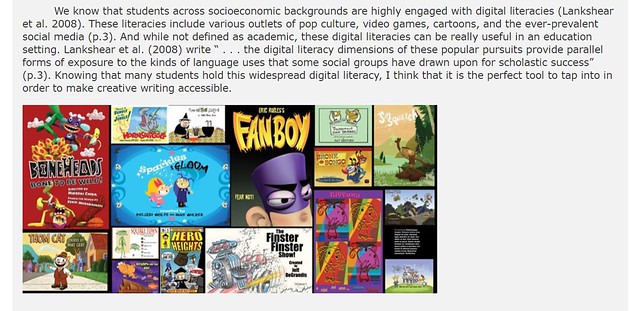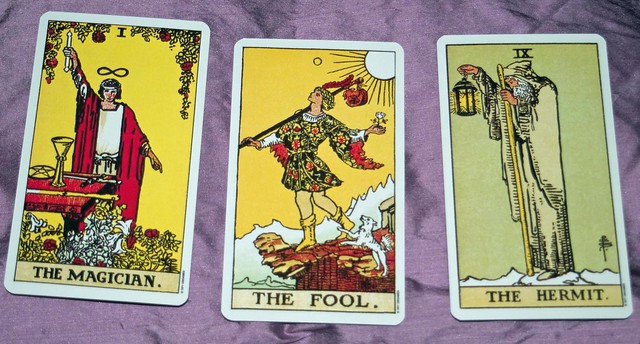Images
Mindfulness in Simple Practice
Mindfulness is something that has occupied a lot of space in my mind as I’ve been attending our Wednesday visits. I’ve been a visitor in a class where meditation is practised every day in a short, 3-minute session at the beginning of each block. And while a handful of students close their eyes and participate, most sit on their phones or whisper to their friends. This isn’t introduced as a privilege but rather, a chore. This is likely because there has been parental pushback against this time that isn’t dedicated to typical “school work.” These few minutes, if used properly, could allow students to increase in their productivity, and gain a better mind-set for the class and their day. This would more than make-up for the few minutes that are dedicated towards mindfulness and yet, this time is widely being ignored.
I remember the first time I meditated it wasn’t a conscious decision. I was in the seventh grade on a field trip to a local high school where they were putting on a school play. After everyone was seated, the lights dimmed to a complete blackout. There was background music but I remember the students being silent as they waited for the curtain to go up. We sat in the dark for what felt like a long time. My eyes were closed and I had never felt so relaxed. I remember thinking afterwards, that was amazing. I need to sit in the dark and just listen to music all the time. I didn’t really realize that I was meditating. I just felt so light and calm. This is a rarity when you’re in middle school; it’s a timeout of the best variety.
I think that it can be hard to introduce mindfulness and meditation into the classroom because students don’t know how to properly identify the benefits. The concepts seem large and unbelievable. There may be scepticism that is easily spread throughout the classroom. Largely, it can seem really uncool to care about something in high school. It is so much easier to belittle it and get a quick laugh.
Still, I think meditation could be an invaluable tool in the classroom. You may just have to be a little bit sneaky in the way you introduce it. Something as simple as saying “I feel really exhausted today. You all seem tired too. Should we just take a quick mind-break and put our heads down for a couple of minutes?” You could guide your students to get comfortable, shut their eyes, maybe turn off the lights. The only rule could be silence. Alternatively, if the energy is high in the classroom, you could take a meditative walk around the school. On a sunny day, a quiet lap around the school could help bring some focus back. The quiet part would be a hard concept to rationalize to your students, but this, of course, depends on the class and the kind of community you have built.
Chakra Reading
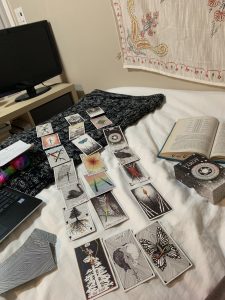
This weekend I ventured into a more complicated reading. It’s an 18 card reading that relates to the 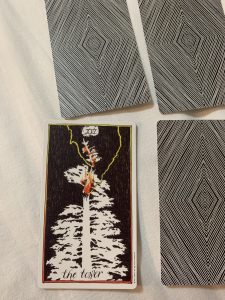 seven chakras: sacrum, genitals, solar-plexus, heart, throat, head (or third-eye), and crown. The first card I drew was the tower. Now I know there is technically no such thing as a bad card, but this one always feels like a rude awakening. The card is a sudden interruption. An upheaval I might not be ready to welcome. I think part of learning Tarot is learning to welcome change in whatever way it presents itself. Though this tower may represent a crisis, this crisis will likely bring necessary change in my life.
seven chakras: sacrum, genitals, solar-plexus, heart, throat, head (or third-eye), and crown. The first card I drew was the tower. Now I know there is technically no such thing as a bad card, but this one always feels like a rude awakening. The card is a sudden interruption. An upheaval I might not be ready to welcome. I think part of learning Tarot is learning to welcome change in whatever way it presents itself. Though this tower may represent a crisis, this crisis will likely bring necessary change in my life.
PowerPoint Practice
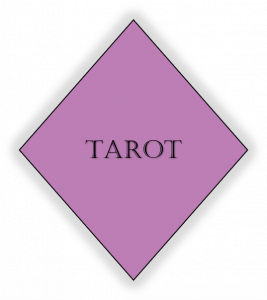

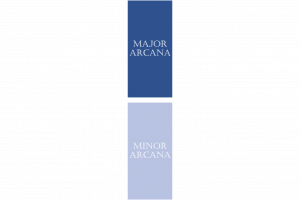
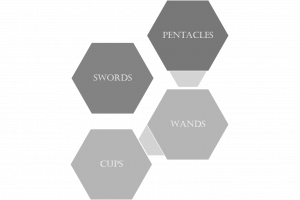
The World in His Hands
Origins of the Mystic
Modern tarot is a symbol of the occult. It is associated with future-prediction, new age ideology, in so many words, a kind of magic. The history of tarot, however, strays from our modern definitions.

Despite its ancient practice, tarots beginnings lack the certain glamour that their modern presence conveys. Though its origins are not clear, tarot can be traced by to somewhere in the early fifteenth century in Northern Italy (Tarcher, 6). By many accounts, there is “Evidence [that] indicates that the first deck that we would call a tarot was created . . . when a fifth suit, containing allegorical figures, was added to an already existing deck of cards”(15).
By 1507, we know that tarot had reached popularity in other regions including Marseilles and surrounding areas (7). In its earliest days, there is some indication of its use for divination but primarily, it was a simple card game (15). In fact, tarot is a likely ancestor of bridge (15).

Despite its humble beginnings, divination remains part of tarots earliest history. Examples of the use of tarot for divination can be traced back to at least, the early sixteenth century (25). When searching for these uses, we are able to differentiate between parlour game and divination based on whether or not the deck includes all 5 suits, including the major arcana (25). The best evidence for this use occurs in a Venician work titled Merlini Cocai Sonnets, published in 1527 (25). This publication includes 5 sonnets “in which trump cards are dealt and laid out then used to determine the fates of the story’s main characters”(25).
By the 18th and 19th centuries, occultists adopted and popularized tarot for use of divination (25). Our most modern understandings of tarot are dated from 1781 to present time (26).
For more information, check out this short video on the history of tarot.
I’m not sure what I was expecting when learning the origins of tarot. Maybe I was looking for some enlightened beginnings that brought this practice to modern-day. What I discovered was that its origins are similar to that of a simple card game. Perhaps its origins are not of the highest importance. Perhaps what allowed tarot to transform and last to its modern definition is what is truly impressive. Stay tuned.
Why Tarot?
Because a little self-investigation never hurt anybody.
New age ideology is often beaten-down by the self-proclaimed “rational.” In this same way, tarot, crystals, astrology, have all been feminized. Some troubling parallels have been made between women’s’ interest in the occult and the snubbing of these practices. I have been told that tarot is self-centred. I have been told that these practices exist only for vain, self-obsessed women. Why else would they care what these glorified playing cards have to say about their lives, right?
Maybe the reason you don’t like these practices is that it forces you to have a deep empathy towards those around you; it forces you to examine your tiny cog in the universe, to reflect on your actions, to come to terms with yourself. Maybe when you look into yourself, you won’t like what you see.
Or maybe, some people are just natural sceptics: they fear the unknown, they don’t believe anything without deep investigation, or they just enjoy throwing their hands in the air and yelling “bullshit!”
For whatever reason, I’ve never had difficulty in enjoying tarot. I’m neither gullible nor self-obsessed. I’ve just used them as a tool for introspection. They allow me to have deep conversations with myself and to others that receive readings. Still, I feel I’ve been somewhat irresponsible.
I picked up my tarot deck in high school. I was young and desperately edgy. I gave them a good shuffle, cut the deck, had my subjects choose four cards from the eight I drew, and laid them out on a sheer blue kimono that I deemed mystical. It was a parody in every sense, and they loved it. Somewhere in this feigned bravado, they started to believe me. They started requesting readings after breakups, before breakups, in the midst of a breakup (people are stupidly obsessed with love hey?).
I’ve been giving readings for about seven years now. And over these years, I have never learned to properly give a reading. I know so little about the history of tarot, it is almost laughable, if I didn’t find it so deeply troubling. This inquiry acts as an open apology to those I’ve burned with my haphazard readings. It also acts as a deep exploration into tarots origins and modern uses. I just think it’s about time.

